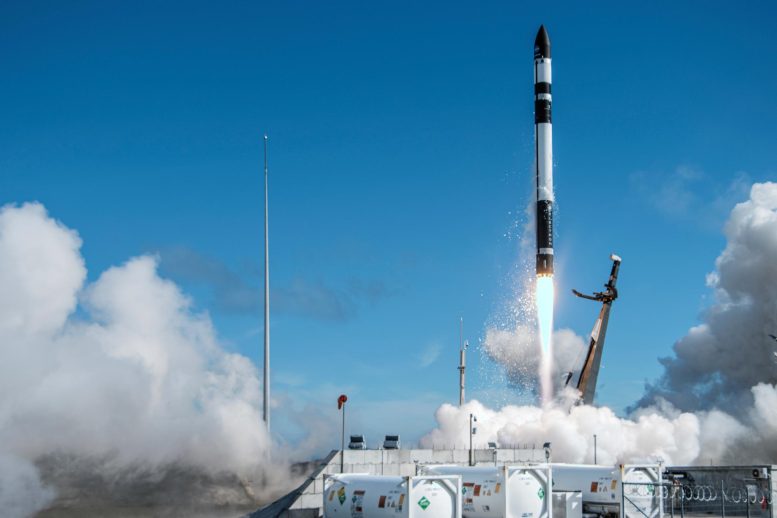
Rocket Lab’s Electron rocket lifts off from Launch Complex 1 at Mahia, New Zealand at 9:00 p.m., carrying two TROPICS CubeSats for NASA. Credit: Rocket Lab
NASA successfully launched the first two TROPICS (Time-Resolved Observations of Precipitation structure and storm Intensity with a Constellation of Smallsats) CubeSats on Monday, aimed at studying tropical cyclones. The CubeSats, part of a constellation of four, will orbit Earth’s tropics in an inclined low Earth orbit, allowing them to monitor storms about once an hour, significantly more frequent than the current six-hour interval. This enhanced monitoring will provide valuable data for improving storm forecasts by organizations such as the National Hurricane Center and Joint Typhoon Warning Center. The remaining two CubeSats are scheduled to launch in approximately two weeks, completing the TROPICS constellation.
Two NASA CubeSats designed to study tropical cyclones, including hurricanes and typhoons, are in orbit after successfully launching at 1 p.m. Monday, NZST (9 p.m. EDT Sunday).
The first pair of the agency’s TROPICS (Time-Resolved Observations of Precipitation structure and storm Intensity with a Constellation of Smallsats) lifted off aboard an Electron rocket from Rocket Lab’s Launch Complex 1 Pad B in Mahia, New Zealand. Team members successfully sent commands to the first CubeSat at 1:48 a.m. EDT, May 8. Subsequently, they established communications with the second CubeSat at 6:31 a.m. EDT.
TROPICS is a constellation of four identical CubeSats designed to observe tropical cyclones in a unique, inclined low Earth orbit over Earth’s tropics – an orbit that allows them to travel over any given storm about once an hour. Current weather tracking satellites have a timing of about once every six hours.
“Providing more frequent imaging will not only improve our situational awareness when a hurricane forms,” said Karen St. Germain, director, Earth Science Division at NASA Headquarters in Washington. “The data will provide information to models that help us determine how a storm is changing over time, which in turn helps to improve forecasts from our partners like the National Hurricane Center and Joint Typhoon Warning Center.”
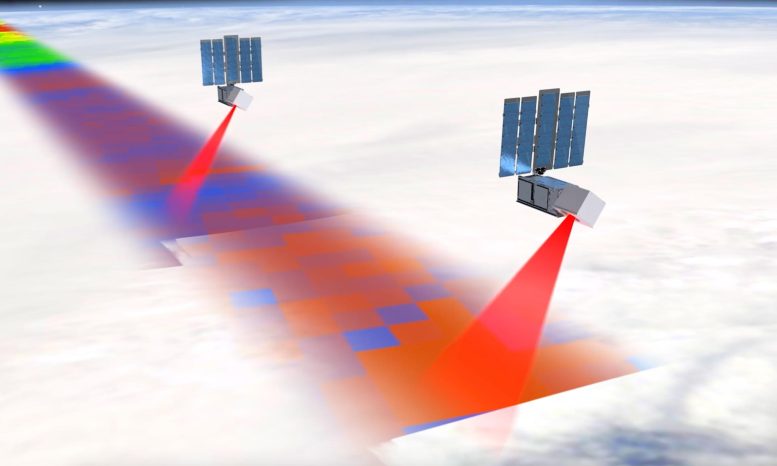
Concept artwork of satellites comprising the TROPICS constellation working in concert to provide rapidly updating microwave observations of storms on Earth, measuring precipitation, temperature, and humidity of a storm. Credit: NASA
NASA announced it selected Rocket Lab USA Inc. of Long Beach, California, to provide the launch service for the agency’s TROPICS mission on November 23, 2022, as part of the VADR (Venture-Class Acquisition of Dedicated and Rideshare) contract.
“Today’s launch service marks the first launch completed as part of the VADR contract, a significant milestone as we aim to enable greater access to space for science and technology missions,” said Bradley Smith, director, Launch Services for the Space Operations Mission Directorate at NASA Headquarters. “We look forward to increasing storm tracking capabilities with another launch later this month to complete the TROPICS constellation.”
The second pair of TROPICS CubeSats is planned to launch aboard another Rocket Lab Electron rocket in about two weeks. The second launch will be timed to insert the next two CubeSats into the TROPICS constellation.
“We are extremely proud of all our partners, including MIT Lincoln Labs, Blue Canyon Technologies, KSAT, and Rocket Lab for successfully executing on this first launch. We look forward to the entire constellation being on-orbit to realize the benefits for the agency, as well as for our colleagues around the world,” said Ben Kim, TROPICS program executive for NASA’s Earth Science Division.
The TROPICS team is led by Principal Investigator Bill Blackwell at Massachusetts Institute of Technology’s Lincoln Laboratory in Lexington, Massachusetts, and includes researchers from NASA, the National Oceanic and Atmospheric Administration, and several universities and commercial partners. NASA’s Launch Services Program, based at the agency’s Kennedy Space Center in Florida, is managing the launch service.


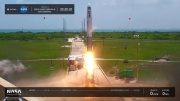
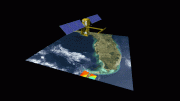



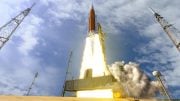

Be the first to comment on "Storm Chasers of the Future: NASA, Rocket Lab Launch First Pair of TROPICS CubeSats"